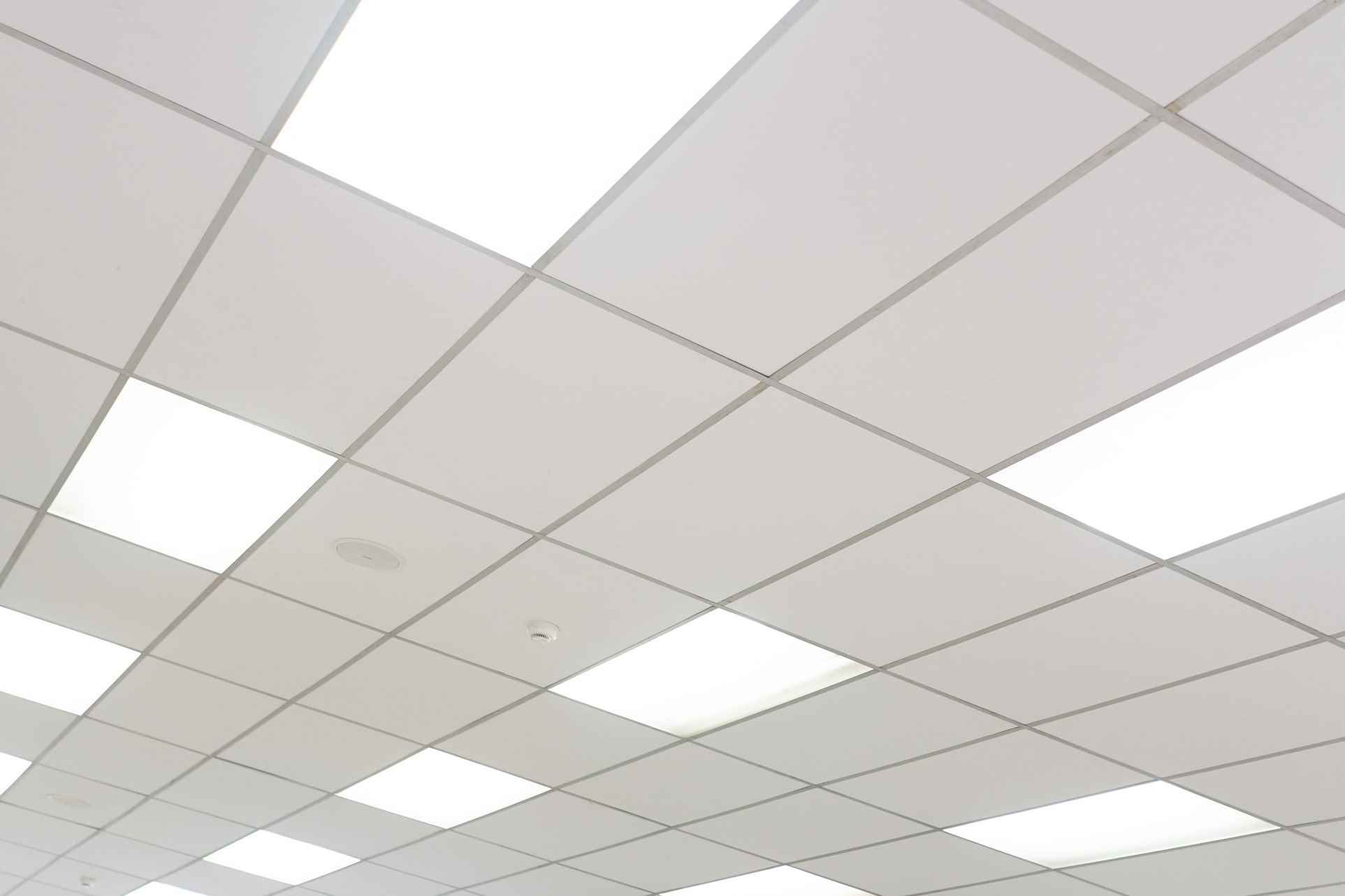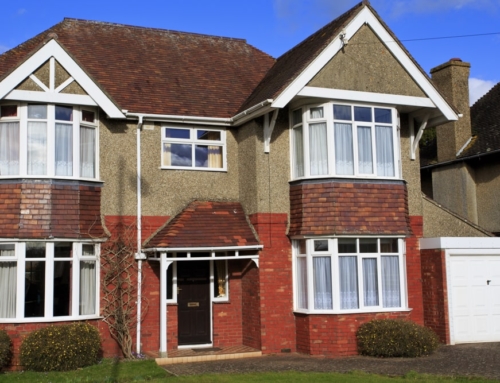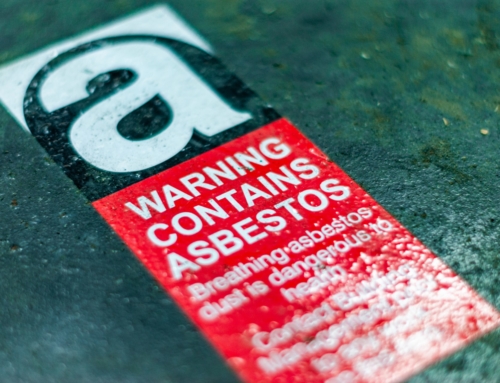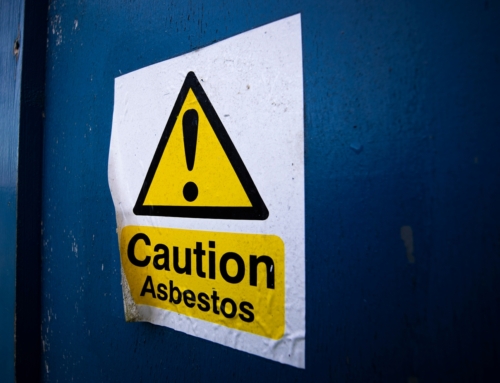With concerns about crumbling concrete and asbestos exposure in many UK buildings, there’s a renewed spotlight on dangerous materials located within properties.
Ceiling tiles are a common feature in many places like hospitals, offices and schools, coming in various materials. In the past, asbestos was often used in the manufacturing of ceiling tiles, so it’s vital we increase awareness of the dangers to keep building occupants safe.
Here’s our easy guide to identifying asbestos ceiling tiles.

What are the different types of asbestos ceilings?
The two most common types of asbestos ceilings are sprayed-on and drop-in tiles.
Asbestos-containing drop-in tiles are square or rectangular, placed in a grid system on the ceiling. They can have a smooth or textured surface and are commonly found in places like office buildings and schools.
By contrast, sprayed-on ceilings consist of a mixture of asbestos fibres, binders and water, creating a popcorn-like texture.
Where are asbestos ceiling tiles found?
Asbestos ceiling tiles were widely used in various settings, including residential, commercial, and industrial buildings. This was thanks to several benefits, primarily because of its fire-resistant, heat-resistant and sound-insulating properties.
Common places where you might find asbestos ceiling tiles include older homes built before the mid-1980s, in areas like basements, bathrooms and utility rooms. Offices, schools, warehouses, hospitals, kitchens and commercial buildings are also a common hotspot.
How do you know if ceiling tiles have asbestos in them?
Unfortunately, identifying asbestos-containing ceiling tiles can be challenging, as they often look similar to non-asbestos tiles. The most reliable method is to hire a certified asbestos inspector to collect samples and conduct asbestos testing. They will use appropriate safety measures to take samples and send them to a laboratory for analysis.
The age of the building can give you clues, as many industries had stopped using asbestos ceiling tiles by 1989, although asbestos wasn’t fully banned in the UK until 1999. You should also review any available records or building plans to see if asbestos materials were specified or installed during construction.
What do asbestos ceilings look like?
Key features of asbestos-containing ceilings include textured surfaces, with common patterns including stippling, popcorn or a cottage cheese appearance. These textures were achieved by mixing asbestos fibres into the material.
Asbestos ceiling tiles are often white, grey, or off-white, although the colour alone is not a definitive indicator of asbestos content. They can also have a distinctive scalloped or squared-edge design.
However, it’s important to remember that visual inspections alone are not conclusive, so professional testing is often necessary to confirm the presence of asbestos in ceiling tiles.
Do you need asbestos ceiling tile testing? Contact us today
Goodbye Asbestos works across London, Surrey and the Home Counties, offering expert asbestos testing, surveys and removals in Fareham, Farnborough and beyond.
For expert advice or a free quote, contact us.




